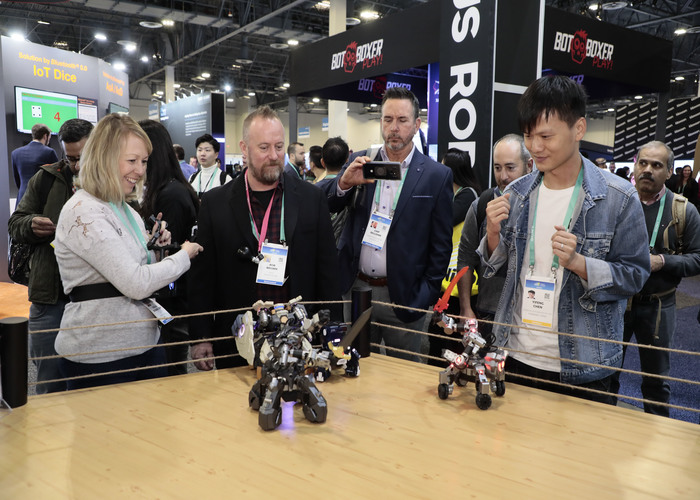To go or not to go? To invest or not to invest? Is it safe? Who will be there? These are a very common set of questions being asked within the C-suite and in sales meetings across the country as it relates to conferences and trade shows. Having the “circuit” shut off in March 2020 and going through the last year and a half without the face-to-face engagement of an event now has all of us questioning the need to return. Should we book tickets, reserve rooms, or secure a 10 by 10 at CES, MWC, E3, InfoComm, NAMM and so many others? Is there still value in these marquee legacy events, or even smaller, vertical-focused conferences?
In our opinion, yes, absolutely, no matter if the event is in person, virtual, or hybrid. While event formats might have changed, what remains the same is the media’s reliance on industry gatherings to see the newest products, meet key executives, and understand the trends shaping the consumer electronics industry and beyond.
During the pandemic, event organizers around the country and the world quickly learned (such as Pepcom Holiday Spectacular and The Toy Insiders Sweet Suite) how to adjust the structure of and value propositions tied to such events. Pepcom Holiday Spectacular, for example, organized an online event with different virtual booths staffed by press reps and product experts who were able to demo products and answer questions for the media in real-time, with the added benefit of viewable and downloadable press materials available to anyone who attended. What’s more, the event continued to exist asynchronously via on-demand videos for each of the booths, along with press contact information for follow-up.
In many cases, what started as rough and choppy virtual experiences have evolved into streamlined and engaging events that attract attendees and, more importantly for us, the media. Event organizers raised the bar and invested significant resources into more robust, custom, immersive, and interactive experiences designed to better replicate their in-person events.
And now, barring any other major COVID-19 variants and setbacks, we’re seeing the return of fully in-person events and are all looking ahead to CES in January 2022. As members of the Consumer Technology Association (CTA) who sit on several of its workgroups and division boards, we do not doubt that the organization is going to set the standard and, better yet, raise the bar for a hybrid event.
So now that you’re ready to re-engage and re-invest in events, both in-person and hybrid, are you truly ready from a PR perspective? Do you have a plan in place? Do you know what members of the media will be attending and how to reach them at each event? Here are some considerations:
Build out your PR strategy early!
Get it done at least two to three months in advance so you’re ready to start engaging the media early as they’re prepping to attend.
Build your media target list.
Choose your top five to 10 journalists or influencers who are most relevant to your sector and who you know will be most interested in your product, news, and narrative.
Stay on top of awards.
Make sure you’re keeping an eye on the dates for submitting for event-specific awards and media-specific awards given out during some of the bigger shows. Winning an award adds a significant level of awareness and pushes your brand above the noise of the event.
Get those embargos out.
As part of any PR plan, especially when launching a new product, embargos must be set up with the media as soon as you have review units or prototypes ready. Given all the news coming out during the actual event, it helps to make news and product available for the media to cover before things get busy, and then ensure that they only publish once the embargo lifts during the event.
Showrunning: Get out on the floor and find the media.
The media are less and less inclined to schedule briefings with you at your booth compared to the good old days, so be prepared to be on the move. You have to walk the floor to find the media. Badge-spot. Camera-spot. Have a demo product with you, if need be. Bring your product to the media. Some shows can be big, busy places, so you have to seek out the coverage you want and be aggressive.
Get creative.
Yes, there is a method to the event media madness, but sometimes it requires some out-of-the-box thinking to raise your brand above the noise: a media event or unique activation at in your booth or outside the convention center; a partnership with a bigger brand to piggyback on its brand cachet; celebrity engagement. Start thinking now and engage with your PR firm as soon as possible to identify the most creative way to get the media to your booth and talk about your brand at any event.
In the end, these new hybrid experiences are not meant to replace fully live events permanently, but rather enhance them for our new normal. Always focus on your objectives — what do you want to get out of the event? If it’s your first time considering a virtual event, walk before you run: Identify a test run at a smaller, less expensive virtual event to get a feel for the experience. If you’re going to go back live and in person, analyze what you have done in the past; take those key learnings with you and determine whether you do the same thing or change strategies. In the end, there is no one size fits all when it comes to choosing which event to participate in and how; there is only the decision that is best for your brand, your team, and you.
David Barkoe is the CEO and Founder of Carve Communications.















